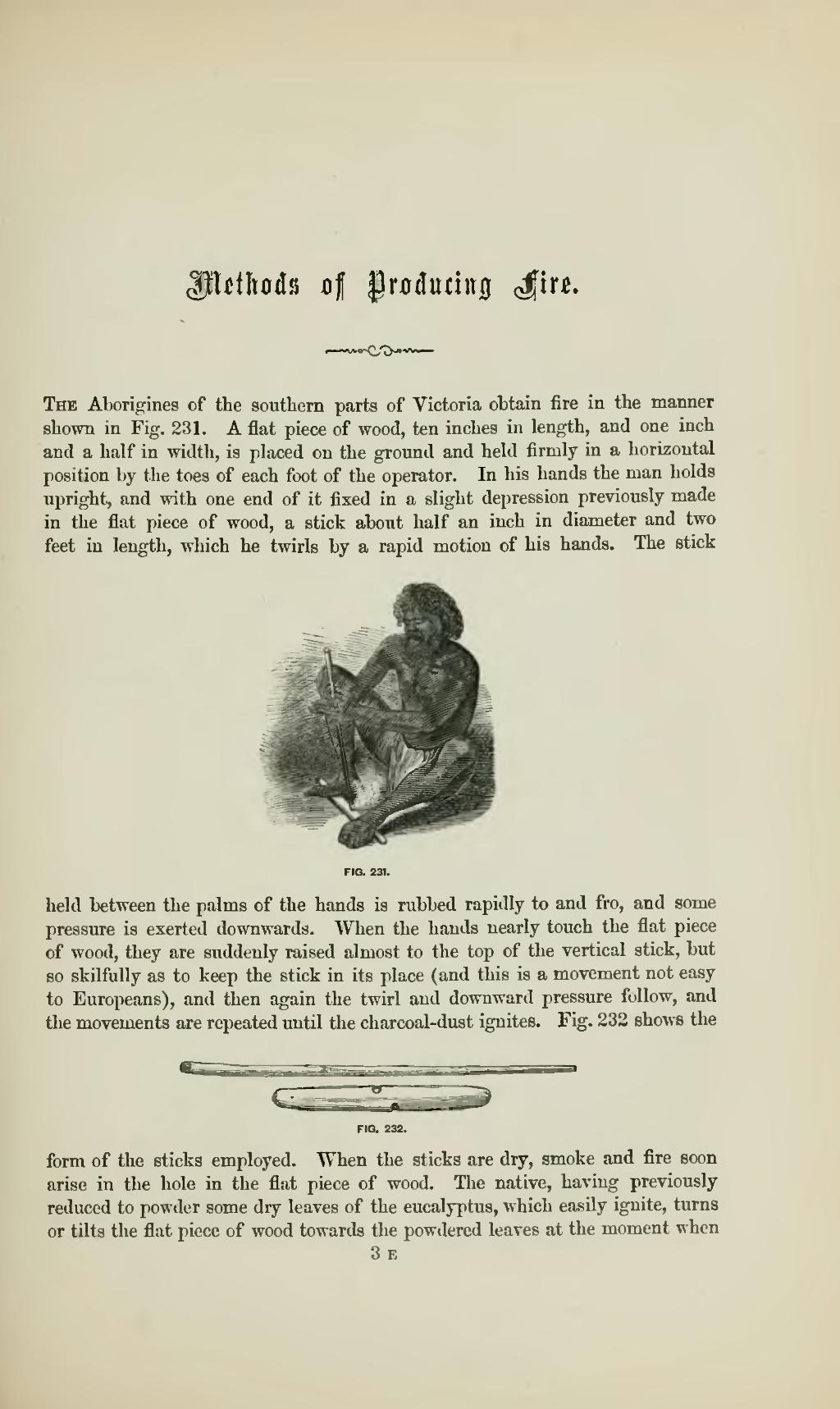The Aborigines of the southern parts of Victoria obtain fire in the manner shown in Fig. 231. A flat piece of wood, ten inches in length, and one inch and a half in width, is placed on the ground and held firmly in a horizontal position by the toes of each foot of the operator. In his hands the man holds upright, and with one end of it fixed in a slight depression previously made in the flat piece of wood, a stick about half an inch in diameter and two feet in length, which he twirls by a rapid motion of his hands. The stick

|
| FIG. 231. |
held between the palms of the hands is rubbed rapidly to and fro, and some pressure is exerted downwards. When the hands nearly touch the flat piece of wood, they are suddenly raised almost to the top of the vertical stick, but so skilfully as to keep the stick in its place (and this is a movement not easy to Europeans), and then again the twirl and downward pressure follow, and the movements are repeated until the charcoal-dust ignites. Fig. 232 shows the

|
| FIG. 232. |
form of the sticks employed. When the sticks are dry, smoke and fire soon arise in the hole in the flat piece of wood. The native, having previously reduced to powder some dry leaves of the eucalyptus, which easily ignite, turns or tilts the flat piece of wood towards the powdered leaves at the moment when

